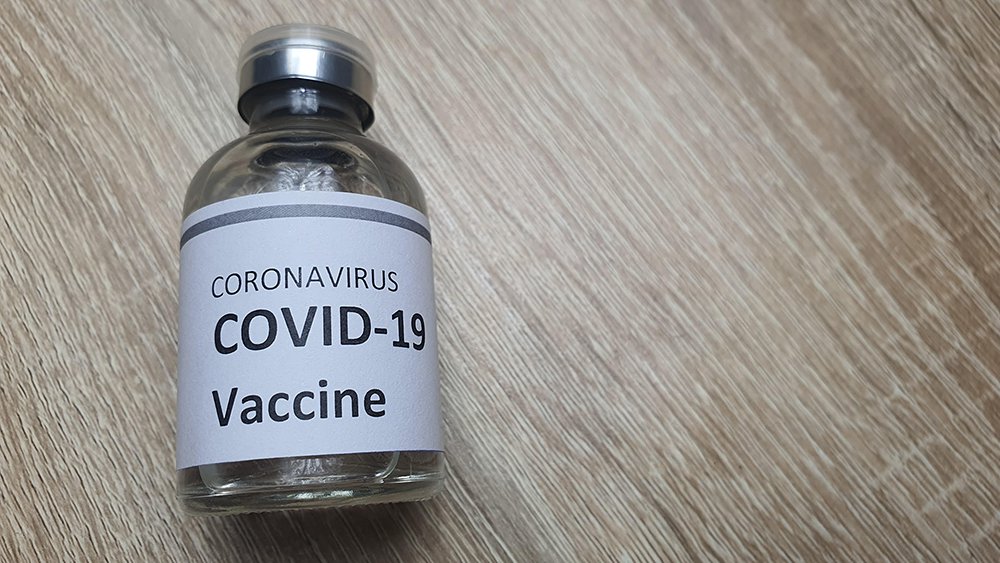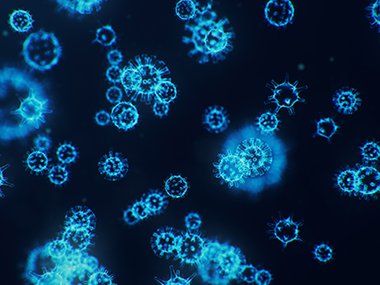Are There Any Long-Term Effects of the COVID-19 Vaccine?
In our effort to continue to share relevant and science-based information about COVID-19, we want to address concerns we’ve seen and heard about the long-term effects of the vaccine.
Some people are hesitant about getting the COVID-19 vaccine because they’re worried it hasn’t been around very long or could potentially have negative or damaging impacts in the future. We’re going to try to help alleviate some unease by addressing two main areas: the components of the vaccine and the immunization response.

Image credit: Getty Images
While the components might not be common knowledge for most of us, scientists are fully aware and know exactly what is in the COVID-19 vaccine. In fact, there are far fewer ingredients in the vaccine recipe than there are in many of the packaged foods we eat regularly! In addition to knowing each component, scientists also know the safety profiles of each item. Here’s the breakdown, then we’ll dive into each one:
- Tiny lipid particles
- Polyethylene glycol
- Common chemicals
- Messenger RNA (mRNA)
1: The tiny lipid particles are itty bitty droplets of a substance that acts like a fat. They don’t dissolve in water, and because of this, act like a vehicle to protect and transport the most important vaccine component, the mRNA.
2: Polyethylene glycol (PEG) is a widely used laxative. There’s only a teeny, tiny amount of it in the COVID-19 vaccine. That might sound a bit strange, but the compounds are widely used as additives in pharmaceuticals, as well as in cosmetics and food. They help stabilize the products, or make them able to be stored for a longer period of time before use.
If someone has an adverse reaction to a vaccine, it’s likely a reaction to PEG. This is why you should stay near a health care worker for 15-30 minutes after getting the vaccine to make sure you don’t have a rare, but potential, reaction. If an allergic reaction occurs, it usually happens within very short periods of time—minutes or hours. If you’re worried about specific allergies, it’s best to contact your medical professional to discuss options.
3: The organic and inorganic chemicals found in vaccines are common substances found in everyday food products like milk, fruit, soft drinks, and Jell-O. They include salts (sodium chloride, potassium chloride, sodium phosphate), sugars (sucrose), citric acid (the compound that makes citrus fruit taste tart), cholesterol, phospholipids and oligosaccharides (natural fats and starches that usually serve as building blocks inside the cell and help carry things through the bloodstream). All these components are found in most of the foods in your fridge or pantry, and are also found in many labs as they serve many functions.

Image credit: Getty Images
4: mRNA is a type of RNA present in virtually all our cells. In the case of vaccines, the molecules decay and disappear entirely over the days following vaccination, with no possibility of making more. mRNA has been studied since it’s discovery in 1960 and has been tested for vaccine usage since the 1990s.
Vaccines coming from different labs have slightly different recipes, but these are basically like the differences between chocolate chip cookies coming from different bakeries. Each cookie recipe might use different amounts of baking soda (sodium bicarbonate), baking powder (a combination of sodium bicarbonate and a weak acid with a buffer like cornstarch), and sodium chloride (table salt). These differences will slightly change the batter and cookie consistency and how all the ingredients blend together, maybe even alter the cooking time, but ultimately each recipe will make a delicious cookie … just in a slightly different way.
Again, there aren’t any unusual or unstudied components included in the COVID-19 vaccine that would cause long-term effects.
Now, to understand the timeline of possible longer-term side effects of the vaccine on your immunization response, let’s work through the timeline of the immunization response. So, what’s happening in your body after you get the vaccine?
Short answer: Vaccines of all kinds are only present in your body for a short time. They come into your body, train your immune system for a specific purpose (i.e. identify COVID-19 and mark it for destruction), and then decay.
Long answer:
- T cells are primed and move out of the lymph nodes looking for a fight just days after the first dose is administered.
- Systemic antibody levels rise substantially, increasing in abundance and affinity for the spike protein after the second dose.
- The second dose functions as a trigger to enhance immunity and convince the immune system that this particular foreign protein is something you may regularly encounter and thus deserves to be taken seriously.
- Over the next few months, in the absence of further stimulation by new copies of the spike protein, the immune response settles down.
- Effector cells--those directly and transiently involved in fighting the virus--decrease in frequency.
- Memory cells are established, poised to quickly ramp up production of antibodies--and even to replicate themselves--settle into their biological niches in our bodies until called upon once more if we happen to get infected. (This is what creates immunity to the coronavirus over the long run.)
- Weeks after immunization, antibody concentrations begin to reach their peak concentration in our blood, ultimately plateauing and beginning their slow decline. At this point, the risk of severe immunization-related complications doesn’t increase, in fact it declines to virtually nothing after about three months.
- By the six-month mark (using a conservative time frame) the body’s response to the vaccine reaches an endpoint. This means that your immune system won’t continue to react in a way that could cause safety concerns five or ten years into the future. Adverse effects almost never occur after three months.
Historically, serious vaccine side effects (if any) emerge within six weeks of receiving a vaccine dose. The FDA required each of the COVID-19 vaccines to be studied for at least two months (eight weeks) after the final dose before granting their first emergency use authorization. For full FDA approval, the primary safety endpoints for serious adverse events conclude six months after the second dose.
Vaccine side effects do happen very, very rarely—as in 1 in 1 million have an allergic reaction rarely. If they happen, it’s in a short time frame so long-term effects shouldn’t be a major concern.
Overall, your risks of both short- and long-term complications from a COVID-19 infection, added to the high risk of catching COVID-19 if you’re not vaccinated, far outweigh the risk incurred from a vaccine.
Lastly, because unfortunately this continues to come up in discussions about long-term effects, vaccines do not cause Autism. Period.


